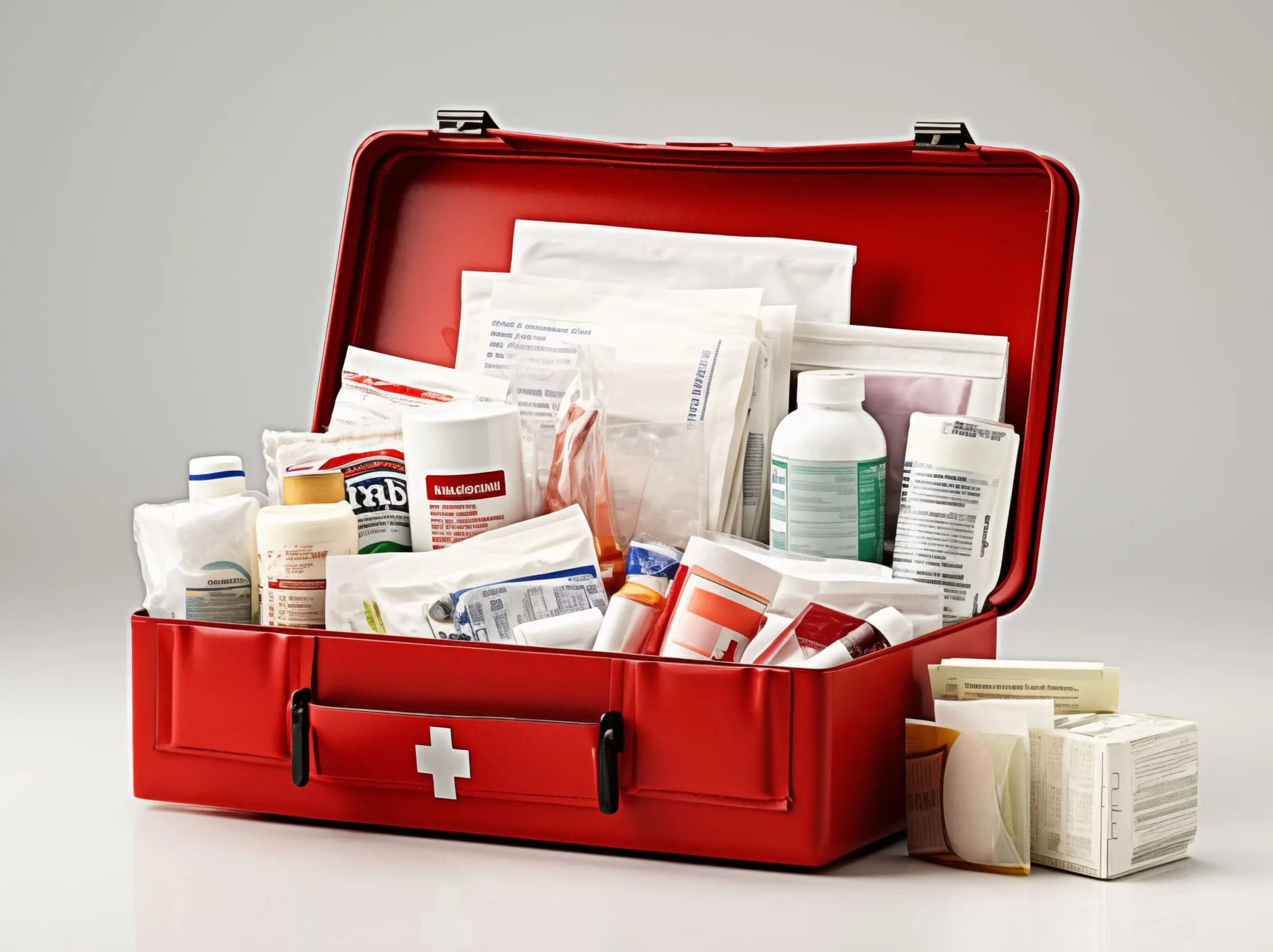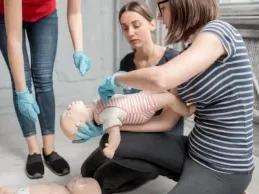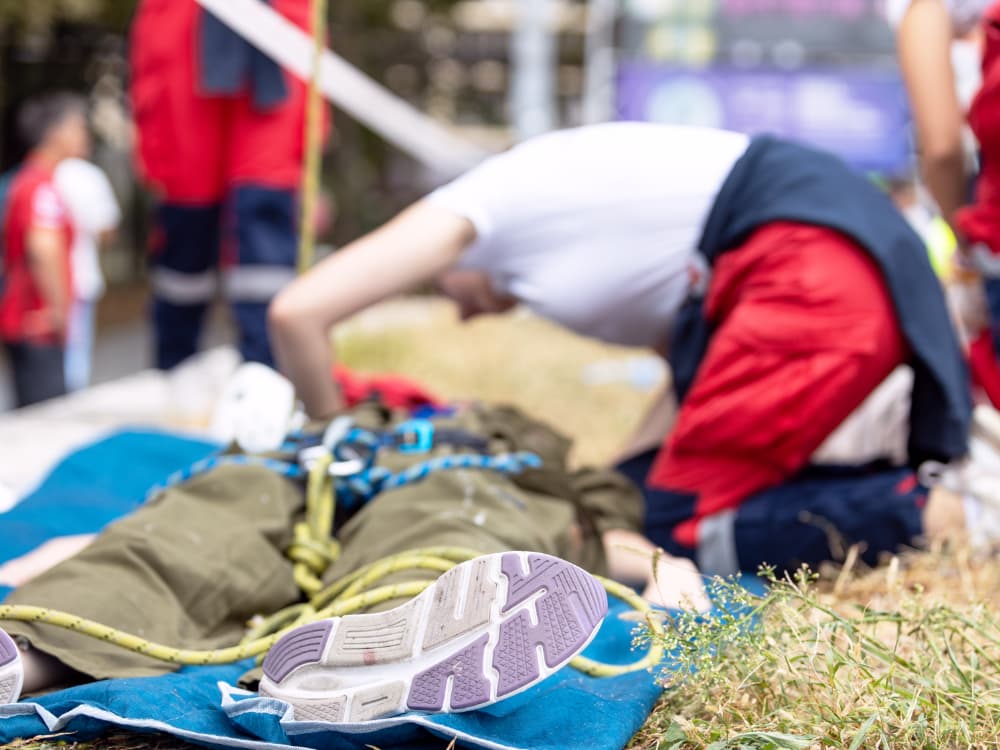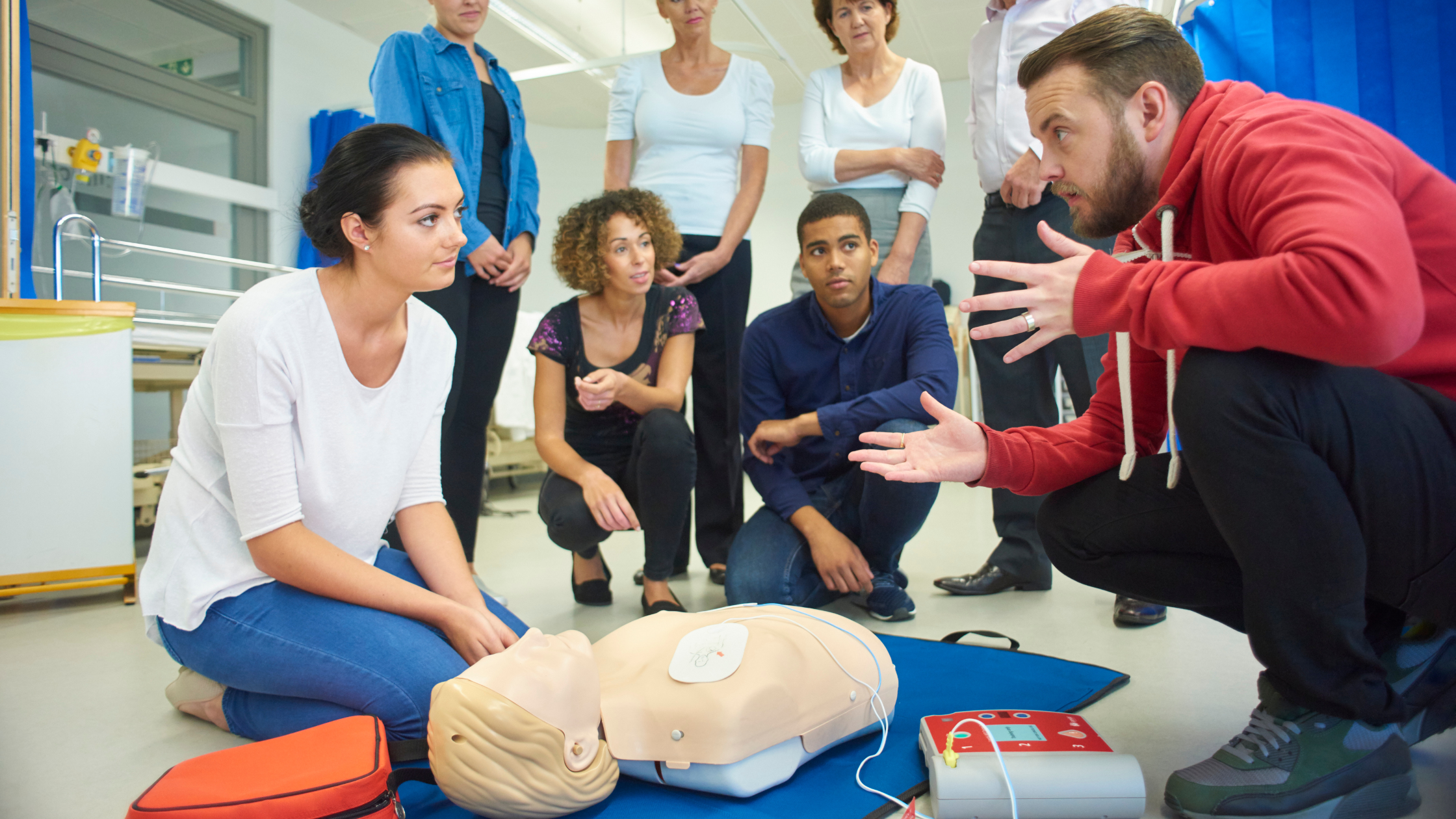One of the most important courses you could ever complete is first aid training. In case of emergencies, you would already be equipped with the right skills and knowledge to deliver potentially life-saving support. While many enrol in the first aid classes as a part of their workplace requirement, the skills one gains in first aid classes are still incredibly essential, even outside the workplace.
However, most people don’t know what can be expected in a first aid classes. That’s why we’ve made a comprehensive guide of all the things you need to know before you get your first-aid certificate.
What is Involved in a First Aid Course?
When it comes to first aid training, the things you will learn are relative to the course you’ve enrolled in. Basic first aid classes let you learn different competencies – from understanding basic life support, knowing how to properly respond to medical emergencies, dealing with workplace injuries to identifying workplace hazards.
Although there are various levels, every first aid training course encourages deeper learning by developing essential life skills that translate effectively anytime, anywhere – be it in the workplace or at home.
The Difference Between a First Aid Course and an Advanced First Aid Course
Are you planning to enrol in a first aid course but don’t know which course suits you best? Learning the difference across the various levels helps you decide what course level suits you best. Most employees get a first aid certificate, not knowing the competencies involved in every level.
When you enrol in a First Aid course, also known as Provide First Aid (HLTAID011), you will learn essential first aid skills. Once you’ve completed the training, you will gain confidence when dealing with and caring for minor wounds. More importantly, you will also grasp a better understanding of basic life support and emergency response technique, like how to give CPR.
As for the Advanced First Aid Course, also known as Provide Advanced First Aid (HLTAID014), you can expect a more thorough understanding and simulation of practical skills in providing first aid response, life support, and emergency management.
Since this is a more comprehensive course, you will learn all the things from the First Aid course plus more concepts – from general first aid practices, quick and immediate emergency response, and usage of various medical equipment such as portable defibrillators, adrenaline auto-injectors, and more.
Always remember that getting a first-aid certificate isn’t always enough. You need the right first aid training to help you respond best when the situation arises. And the type of training you will need should depend on a variety of factors. So, before enrolling in one, don’t hesitate to assess and consider your unique situation.
How Do I know My First Aid Certificate is Current?
Once you’ve decided on the type of first aid training you want to complete, it’s crucial to understand its validity. If you’re wondering how long the certificate stays valid for and when you should renew it, you’re not alone.
Many people get mixed up and don’t renew their certificates on time. In the country, every nationally accredited first aid certificate, like the HLTAID011, stays current for three years. As for the CPR training (HLTAID009), you need to complete refresher training annually. The yearly training is conducted to update the first aiders’ knowledge and skills in providing first aid.
What to Learn in First Aid Training
With first aid training, you have an opportunity to discover new and relevant skills to respond to different situations. You can learn various competencies, including:
Prompt Emergency Response
Among the most significant things a first aid course will teach you is a proactive emergency response. Before delving deep on the different facets of first aid, you need to know how to respond to the situation first. Since every situation is unique, having a clear-cut assessment of the appropriate course of action is imperative.
As you begin your journey to getting first aid certified, you need to know how to properly approach an individual, what signs to look for, and how to effectively decrease the risks of getting physically endangered.
In an accident, most people hastily respond to the situation, lacking awareness and foresight. This causes more harm than good, which is why every first aid course introduces the right response to every situation.
CPR and AED Training
Well, most of us are familiar with the term ‘CPR’, but do any of you know what it means and how to correctly perform it? Cardiopulmonary Resuscitation or CPR is an incredibly crucial life-saving technique. That is why having the right knowledge and training can make a difference when faced with a life-and-death situation.
Aside from learning the proper CPR technique, a first aid training will also equip you with the skills needed to effectively use an Automatic External Defibrillator (AED). All these skills and information, made simple and easily digestible, can significantly increase every patient’s chance of survival.
Treating Wounds
Do you know what to do when someone has an intense burn as a result of an occupational hazard? Wondering what to do when your colleague is severely wounded? No matter how big or small a wound is, it is crucial to treat it promptly and appropriately.
When you enrol in first aid training courses, you will learn how to properly bandage wounds, treat bruises and burns, and care for other types of wounds.
Emergencies in Choking and Breathing
A choking emergency knows no age. It can happen to anyone – whether he or she is a toddler, teen, an adult or a senior. Whenever one has an allergic reaction to food, or something gets stuck in their throats, it is crucial to know what to do. Some situations may not be as conspicuous as the others, which is why the training introduces different situations that help you easily recognise other choking and breathing emergencies.
Injuries
Unprecedented events happen when we least expect them. While you try to always keep yourself safe, accidents may still happen. And when they do, it is better to know how to respond accordingly. Whether someone falls or trips right in front of you, as a first aider, you won’t have to worry and feel overwhelmed on what to do. This is because you’re highly trained and skilled to respond confidently.
How Long Does it Take to Complete a First Aid Course?
Many people want to learn and get certified, but time can often hinder the process. Most learners are intimidated by the hours or even days they need to invest to earn the certificate.
The duration of the training largely depends on the registered training organisation you enrolled in. At the Australian Training Institute, we have options for blended training that involves online training prior to coming into the classroom. This helps familiarise yourself with the content and aims to reduce the amount of time you have to spend in the classroom! The online training can be completed approximately three to five hours, depending on the learner’s pace and situation. The face-to-face training component can last at most for three and a half hours.
The 5 Principles in First Aid
Like any other training, first aid training aims to teach life-long principles to every learner. These five principles are:
Preserve Life
First aiders are not licensed medical professionals, but it is part of their responsibility to give the best method in preserving life long enough until the ambulance arrives.
Prevent the Escalation of Illness or Injury
When accidents happen and a patient is severely injured, the role of first aiders is always to make sure that the patient gets appropriate care to minimise the chances of complicated surgery or medical intervention. By doing so, they can prevent further health complications.
Promote Faster Recovery
Other than deescalating the situation, every first aider’s action is to ensure that the patient will recover quickly from the injuries he/she has sustained. This is why first aiders have to respond promptly to any emergency. Any injured person must be attended to as soon as possible.
Pain Relief
In an accident, trauma and pain are inevitable, but pain relief is possible when first aiders to respond to the situation promptly. Always remember that some pain medications can be dangerous and might induce bleeding or other complications. Therefore, it is wise to not advise patients or injured victims any pain meds when you’re unsure.
Protect the Unconscious
Administering first aid extends not just by attending to the injured conscious, but most especially to the unconscious. As a first aider, it is your responsibility to ensure that the unconscious is safe by removing them from a dangerous location, like flooded space or a burning property.
How To Find First Aid Course Near Me
Finding the right RTO can be a tedious and overwhelming process. However, being scrupulous with the whole selection process can go a long way. You can start your search by identifying the type of first aid training you need and determining your budget.
As you sift through every organisation, don’t hesitate to ask questions – it can be about anything about the course and its outcome. Do they offer a blended learning type of class where students can learn at their own pace while being guided by a physical instructor? Are they open to group bookings? How about their results? Do they keep track of their previous trainees? Always remember that all your questions matter most in making the best decision.
ATI: Providing Quality and Reliable First Aid Course Class
First aid training is not just a mere compliance requirement for the workplace. It hones life-saving skills that can change lives. With all the benefits that come with first aid training, it’s no secret why many individuals are looking for RTOs that offer this course.
At the Australian Training Institute, we deliver the best training for you to learn and incorporate the skills you know with our program. Let us help you champion a safer work environment as you create a more productive workforce.
Change Starts Here!
Our team of dedicated professionals is more than happy to help you enhance your skills and jumpstart your career with our accredited first aid training courses. Together we journey towards growth! We provide the following first aid training courses:
First Aid training (HLTAID011)
Childcare First Aid training (HLTAID012)
Provide First Aid in Remote Situations training (HLTAID013)
Advanced First Aid training (HLTAID014)
Advanced Resuscitation training (HLTAID015)
Occupational First Aid (HLTAID016)
Low Voltage Rescue training (UETTDRRF06)
Anaphylaxis training (22578VIC)
Australian Training Institute‘s campus is located in 7/51 Brighton Rd, Sandgate QLD 4017 and is just a few minutes away from the Deagon, Brighton, Virginia, Clontarf, Brendale, Strathpine and Chermside.
For more information and details about our service, get in touch with us today. You can call us on 07 3269 5005 or send us an email by completing the inquiry form on our website.




